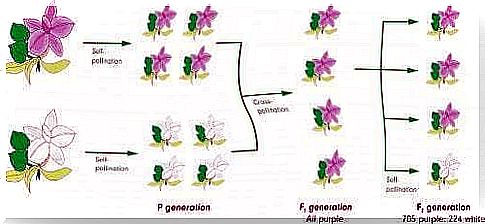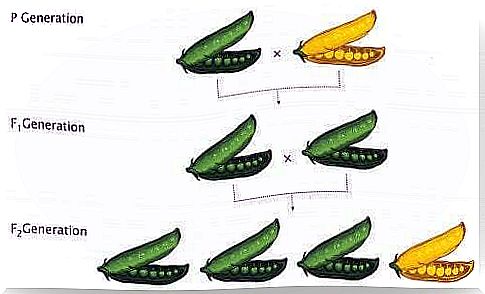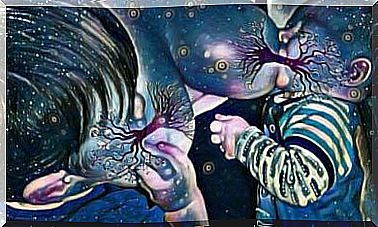Mendel’s Laws Explained In A Simple Way

Gregor Mendel was an Augustinian monk of the mid 19th century. His ability to observe and the rigorous methodology of his work led him to develop the first theories on genetics, which he collected into three laws. Mendel’s laws are based on curious studies of the peas he had planted in his garden. But how did a monk become the father of genetics? Let’s see Mendel’s laws explained in a simple way.
Mendel observed that in the garden of the Abbey of Santo Tommaso, where he lived, different types of peas grew: green and yellow, smooth and rough. These observable characters (phenotypes) did not mix, but alternated. Then, taking advantage of the rapid growth of the peas, Mendel started making hybrids of different plants to see what happened. In this article, Mendel’s laws explained in a simple way.
Mendel’s laws
Mendel’s first law
Also known as the law of uniformity of first generation hybrids. What does this first postulate tell us? Mendel prepared the following simple experiment. In his orchard there were two varieties of peas, purple and white. So he decided to make crossings between purple lines:
- White male (AA) x purple female (aa).
- Purple male (aa) x white female (AA).
- As a result, he had obtained an entire first generation of plants with 100% purple (Aa) flowers.
You may be wondering what these bracketed letters are. Well, they are the pair of genes that determine the color. Each trait we observe corresponds to 2 genes, one for each parent. In pure lines both genes are the same and in different hybrids. That is why, in the first generation obtained by Mendel, we wrote Aa, although it was also purple.
After this little pause in our explanation of Mendel’s Laws, we will continue with the second law. What experiment occurred on this occasion for our gardener monk?
Mendel’s second law or principle of segregation
Now that he had obtained the hybrid plants (Aa), all with purple flowers, it occurred to him to self-fertilize them or, in other words, to create a cross of Aa plants with themselves. The result of this second generation is fascinating: Mendel gets 1/4 of white plants and 3/4 of purple plants.

What earned Mendel his nickname “father of genetics” was the brilliant and, above all, correct interpretation of the results he observed. We must not lose sight of the fact that when Mendel performed these experiments the DNA had not yet been discovered. It would be 75 years before Watson and Cric found out.
He wrote on the card a simple cross in which the genes of each parent were inherited separately. From the crossing Aa x Aa 3 genotypically different but phenotypically identical progeny are obtained and 1 both genotypically and phenotypically different:
- 1/4 AA → purple.
- 1/4 Aa → purple.
- 1/4 aA → purple.
- 1/4 aa → white.
At first glance, we see all purple flower pea plants in the same way, but within their cells, in their DNA, are the differences and peculiarities that will lead us to Mendel’s next experiment. Let’s talk about Mendel’s laws explained in a simple way.
Mendel’s third law or Principle of independent combination
For the postulation of the latter Law, Mendel relied on the results obtained from the experiments conducted to prove his second theory (remember that the existence of DNA was not yet known). To do this, he developed a series of crosses, this time, looking at the characters of the seeds: yellow / green, smooth / rough. He wanted to know if both characters were inherited together or separately.

- He crossed several pure lines of seeds, as he did in his first experiment, to obtain a genetically homogeneous first generation (F1).
- This F1 crossed it again with what is called a recessive parent, one whose traits are only observed if their two genes are the same (aabb); a rough green seed.
- As a result, he got 1/4 of each variety : smooth green, smooth yellow, rough green, rough yellow.
In this way, Mendel was able to verify that characters are inherited independently. Subsequently, science found that this is not always the case, since there are inherited traits linked, as they are found very close together in the DNA.
Mendel’s laws today
As a result of these experiments on hybridizing plants among what Mendel called pure breeds, he postulated his three laws governing the transmission patterns of hereditary information of genetic traits (genotypes). Throughout his life he carried out many other experiments, increasing the number of observable characters.
Since then, genetics has evolved tremendously to this day. It is surprising that, only 150 years later, man is able to manipulate these traits and create genetically modified beings, be they chimeras, transgenics, clones or even people.









